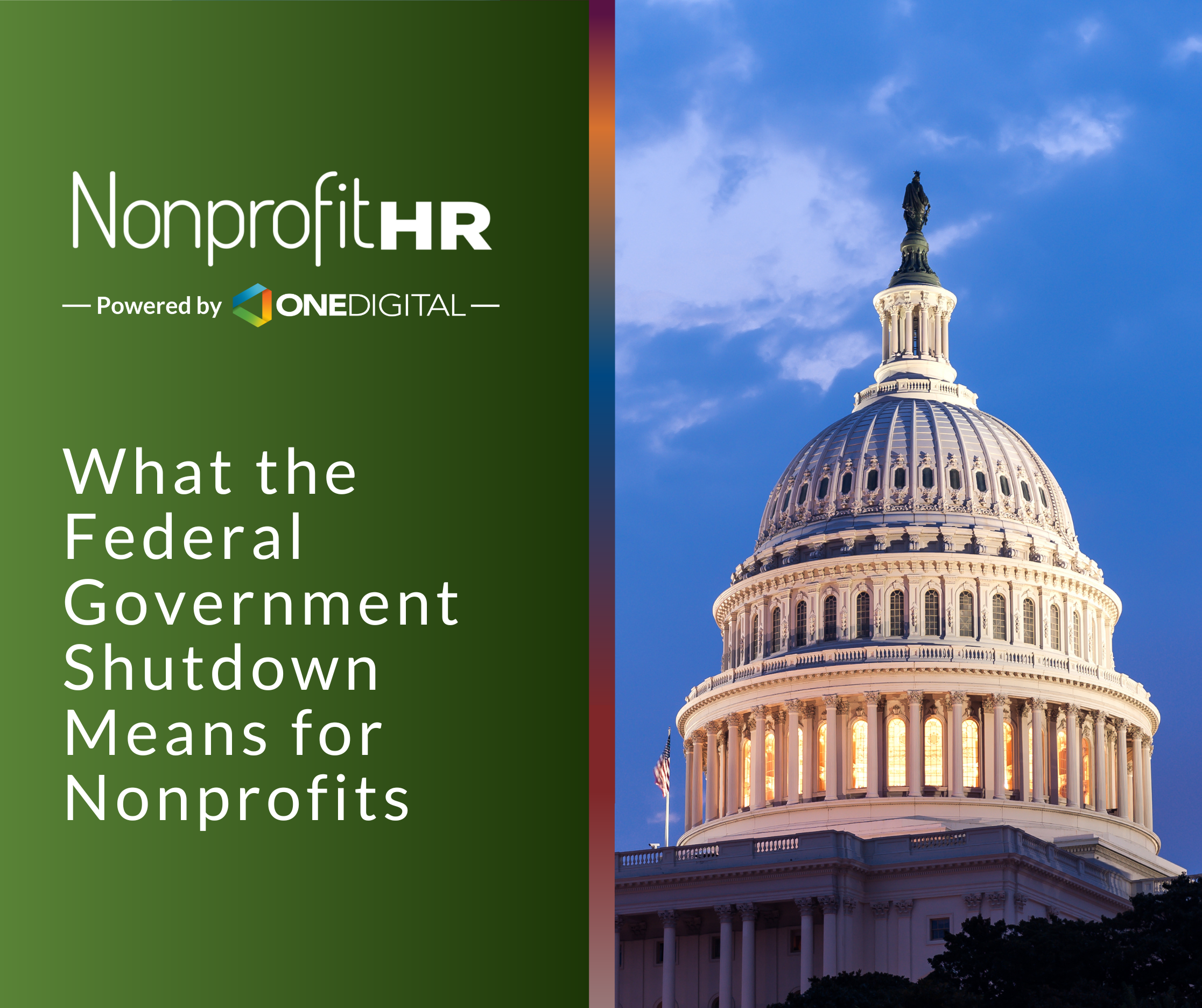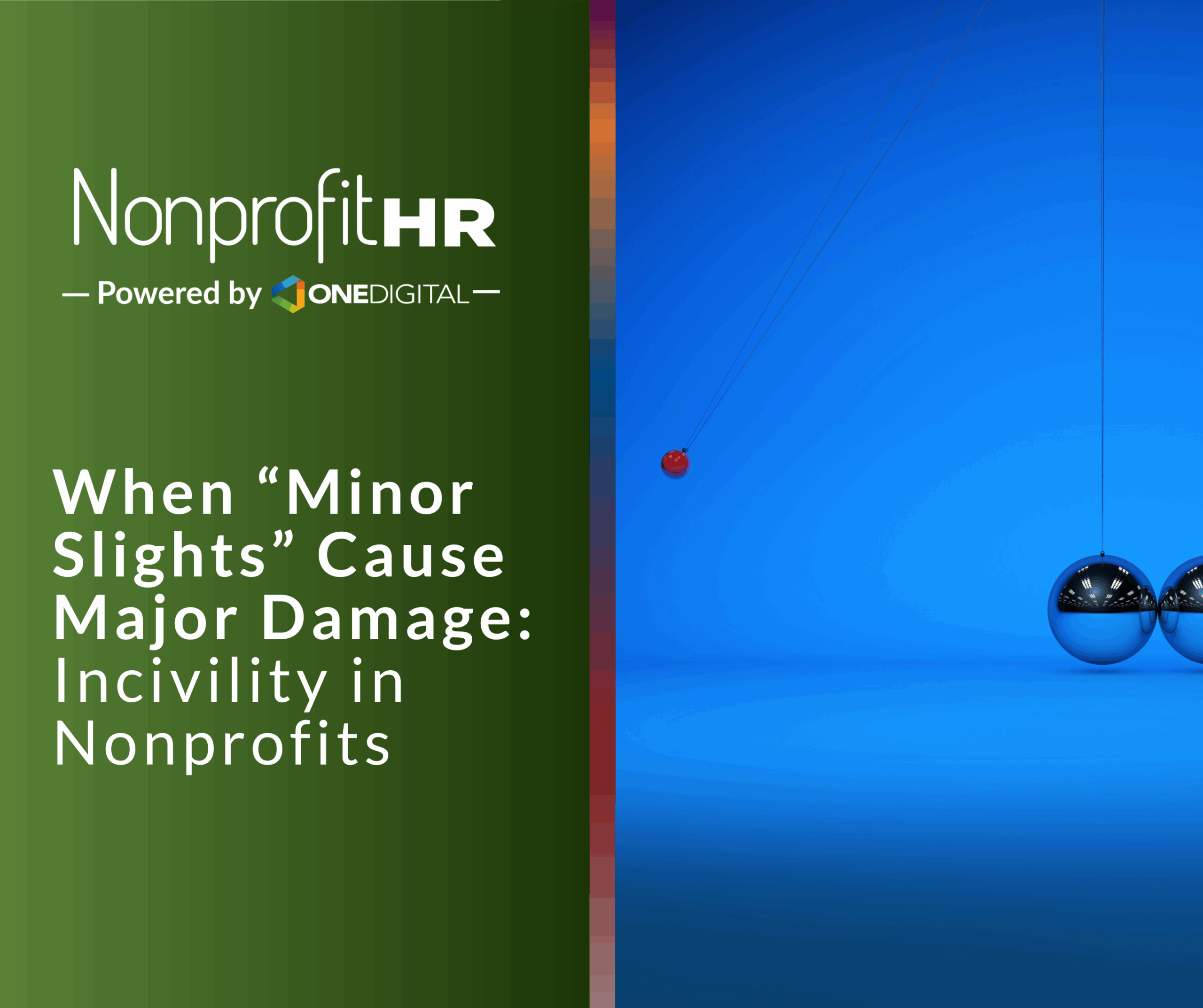WTOP: 5 ways nonprofits can…
Recently enacted regulation may increase nonprofits costs to do business starting 2020
The Fair Labor Standards Act (FLSA) established a federal minimum wage and overtime benefit for the first time in 1938, lifting millions out of poverty. In 2016 the Obama Administration proposed doubling the overtime salary threshold to $47,476. Following court battles and a new administration, a new overtime salary threshold of $35,568 was approved to take effect January 1, 2020.
This new threshold means that anyone earning less than $35,568 will be classified as non-exempt and eligible to be paid overtime. This threshold has been at $23,660 and is increasing for the first time in 15 years. Your organization may now have additional employees who are considered non-exempt under the FLSA and eligible for overtime.
What Your Organization Should Know:
-The FLSA uses both a salary basis test and duties test to determine whether an employee is exempt from overtime. For covered, non-exempt employees, the FLSA requires overtime pay to be at least one and one-half times an employee’s regular rate of pay after 40 hours of work in a workweek.
-The FLSA duties test will not change. The new overtime threshold under the salary basis test applies to roles in certain positions; executive, administrative, professional, computer and outside sales. See DOL Fact Sheet: #17A
-Job titles are not a factor in determining a position’s exemption.
-Non-discretionary bonuses, incentives and commissions up to 10% may be included to increase an employee’s salary level.
-Employers will need to pay overtime to newly eligible employees or increase pay that would put them over the $35,568 threshold.
-The overtime salary threshold will increase every four years.
-Hourly pay is the most common way to pay non-exempt employees; the new regulations will offer several pay methods: day rate, piece rate and even a salary.
-Some states are implementing their own overtime thresholds that are higher than the federal limit.
What Your Organization Should Do:
1.Review job descriptions to ensure that they are still accurate, reflecting the jobs performed and skills necessary.
2. Audit current salaries and classifications to ensure all positions and employees are correctly classified based on the current rules test and that the new overtime salary threshold will be met.
3.Put systems in place to monitor work hours and the use of overtime for non-exempt employees.
-Track hours worked for non-exempt employees, their tasks and how much of their time is spent on each. Note, there is no legal requirement to track hours for exempt employees.
-Calculate how much overtime employees actually work and pay them overtime rates.
-Tighten up processes for approval of overtime by being clear about job expectations and scope.
4.Examine processes and how operations could be impacted by reclassification and/or salary increases to ensure compliance and business continuity.
Know Your Numbers!
The new overtime salary threshold may require tough budgetary decision around compensation and benefits currently offered. You should carefully review those plans as salary costs increase. Ensure communication with any affected employees so that they understand the changes and how it impacts them. Take these steps now and ensure you are in compliance by 2020 when these new regulations take effect.
Nonprofit HR
Need help preparing for the new regulations? Schedule a mini-consult with our Total Rewards practice leader!






























